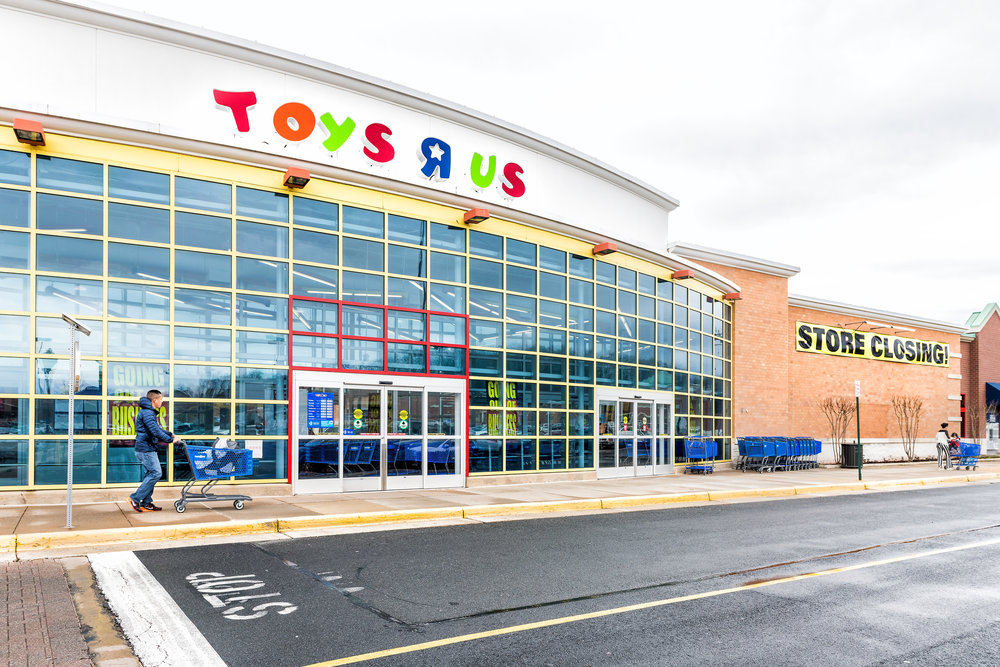Will Toys R Us Stores Stay Empty Long?
Shockwaves but not a lot of surprise rippled through the news in March when it was announced that Toys R Us would be closing all of its U.S. stores. Wichita’s Babies R Us store on west Kellogg was in the first round of closures in January this year as the company attempted to climb out of Chapter 11 bankruptcy. The remaining Toys R Us store at 8011 E. Kellogg closed in March along with the rest of the brand’s stores.
For some, it was one more sign of retail’s struggles in the face of a changing consumer environment. For others, more vacant space in a tightening CRE market is good news.
Rumors abound that Amazon is looking to expand its brick-and-mortar footprint after buying 460+ Whole Foods stores last year by buying up some Toys R Us locations, but those are as yet only rumors. In Canada, Toys R Us is still lucrative and has attracted some interest from the founder of MGA Entertainment who may also be interested in salvaging some U.S. stores.
Millions of Square Feet Up for Grabs
As long as e-commerce continues to boom, there will be a need for more real estate space to support online ordering. We recently highlighted the tightening those in the industrial and warehousing sectors are experiencing. According to some projections, due to 10% year-over-year increases in e-commerce, retailers will need to find another 50 million square feet of industrial warehouse space this year alone to handle the load.
There is a need for space within city limits – where many Toys R Us stores are located. There is a need for space out in the suburbs and along the supply chain routes outside of cities. For this sector, news that Toys R Us is closing their stores means that there will be millions of square feet of space going vacant soon.
Beyond warehousing and industrial, finding tenants to replace nearly 800 Toys R Us stores is going to be a challenge. CoStar Group research points to poor location for many Toys R Us stores as the problem with trying to fill those spaces with new tenants. On the plus side, buyers are going to be able to purchase these properties for far less than market value. Landlords are also excited about the opportunity to push their rent rates for new tenants more in line with the market and not as far below it as Toys R Us store leases have been.
Possible Uses for Toys R Us Space
Investors looking for stores that are in strong locations is the most realistic option. For instance, malls that are still anchored by a successful store where there is a Toys R Us location closing could attract new tenants to the space more easily.
Retailers with storefronts of similar size like Bed, Bath, & Beyond could also expand their presence by buying a couple of locations that are closing but nowhere near enough to fill all of the locations. In PA, New Jersey, and Delaware, landlords are going to be challenged to fill the close to 1 million square feet of space going dark because of Toys R Us closing.
Finding New Uses for Old Properties
Industrial and small retailers are only going to be able to do so much in cutting Toys R Us’ losses. For the majority of these stores, landlords and developers are going to have to come up with new uses for these old properties.
We recently talked about how grocery stores are replacing anchor stores in city malls. More than that, they are revamping whole areas into food centers. Could shuttering Toys R Us stores benefit from new malls and shopping centers anchored by grocery?
Warehouse space is shrinking into smaller shallow bay buildings to accommodate in-city deliveries and distribution. Could some of these stores help fulfill the last mile and warehousing issues online retailers are experiencing? Co-working and office sharing models could also work for small storefronts like old Toys R Us stores.


